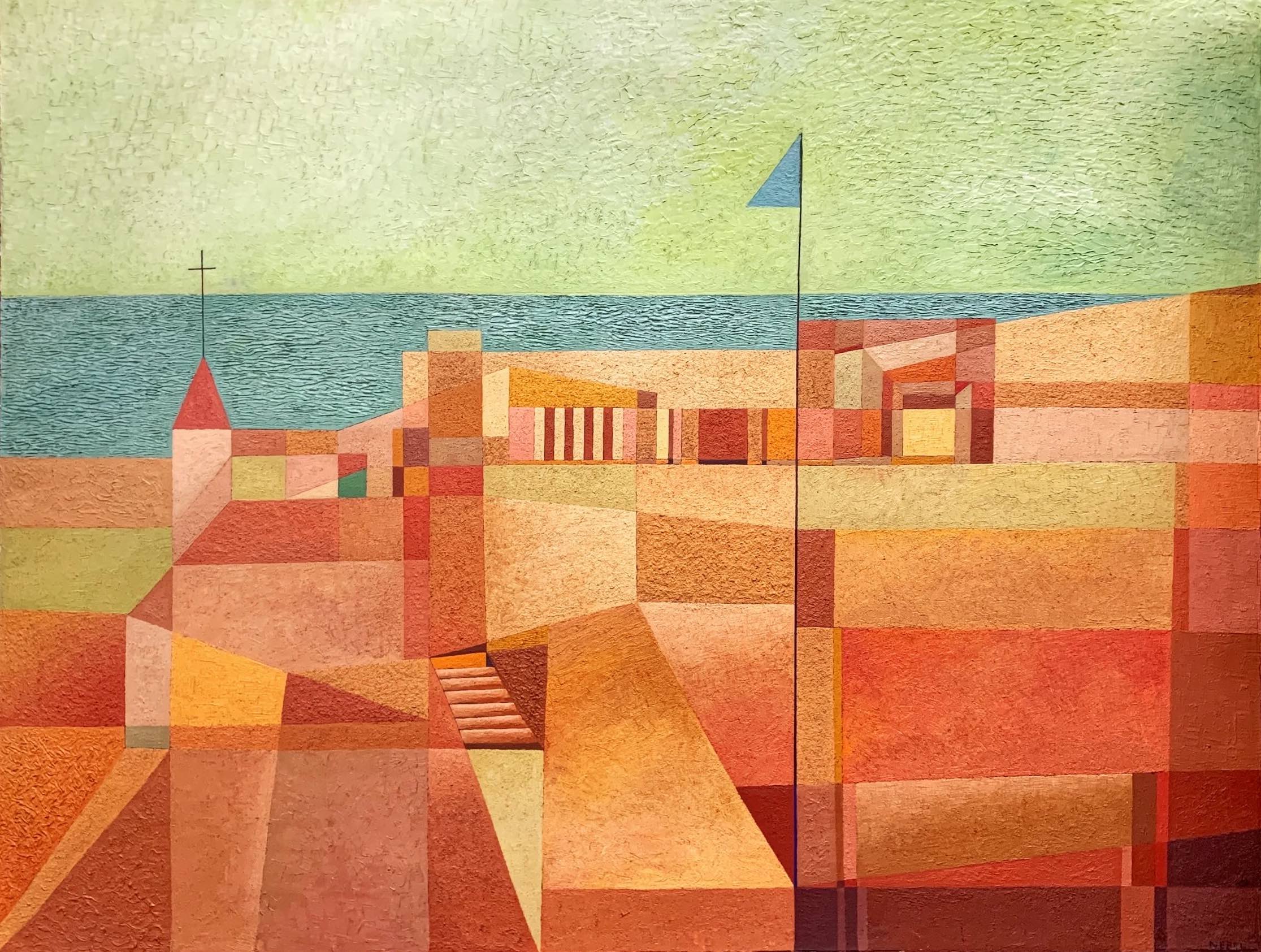Biography
Otto Nebel received acting lessons from Rudolf Blümner and Friedrich Kayssler at the Lessingtheater in Berlin until 1914. During the First World War he was a soldier.
From 1918, during a 14-month war captivity in Colsterdale, England, he wrote Zuginsfeld, an expressionist poem outlawing war. In 1919 he returned to Berlin. He lived there as a painter and writer and became friends with Wassily Kandinsky, Paul Klee and Georg Muche. During this time he joined the circle around the writer Herwarth Walden and his wife Nell Walden. In 1923 Nebel founded the artists’ group Der Krater in Berlin together with Hilla von Rebay and Rudolf Bauer.
In 1924 Nebel married Hildegard Heitmeyer, whom he had met at the Bauhaus in Weimar. There she was the assistant of the lecturer for practical harmony Gertrud Grunow. He stayed in Weimar until 1925, writing, painting and acting.
When his works were denigrated as “degenerate art” by the National Socialists from 1933, he emigrated to Switzerland. He settled first in Muntelier, then later in Bern. Through Kandinsky’s efforts, Nebel received a kind of grant from the Guggenheim Foundation to support him from 1936 to 1951.
In the years 1937 to 1938 Nebel stayed in Italy, but the Second World War forced him to return to Switzerland. In exile, Nebel became increasingly involved with mysticism, and through the work of Emanuel Swedenborg, Nebel joined the New Church in 1942.
From 1951 to 1955 Nebel earned his living as an actor at the Bern Kammerspiele (now the Atelier Theater), and in 1952 he was granted citizenship of Bern for irreproachability. In 1962, at the age of 70, Nebel undertook a major trip to Greece and the Middle East. The artistic processing of this journey occupied Nebel until the end of his life.
In 1965, the Federal Republic of Germany awarded Otto Nebel the Grand Federal Cross of Merit. In 1969 Nebel donated around 200 paintings to the Kunstmuseum Bern.
